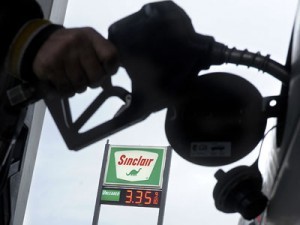Press Release
(AP Photo/St. Joseph News-Press, Todd Weddle)
BOISE – National average gas prices have remained fairly flat for the last 29 days, but Idaho isn’t sharing in the good news. Local supply issues recently pushed Gem State pump prices into the nation’s top ten.
Idaho’s average price today is $2.44, up seven cents in the past month and fourteen cents higher than the national average price of $2.30 per gallon.
The trouble started when Plains All American Pipeline reported “indications of soil movement” that forced the shutdown of its Wasatch Pipeline, a major system that supplies crude oil to Salt Lake City refineries from locations near Evanston, Wyoming. That supply is now being delivered by truck – a slower and more expensive distribution method.
“In many cases, the price of Idaho fuel is affected by driver demand or international crude oil production,” says AAA spokesman Matthew Conde. “Pipeline and other distribution issues are wild cards that no one expects.”
Salt Lake refineries have all reduced production, and one company even shut down operations for about a week. That means less available fuel for Utah and Idaho drivers. In the past week, Utah gas prices rose six cents, while Gem State pump prices followed suit.
AAA says that Idaho drivers can expect little relief when the Wasatch Pipeline returns to service, because in just a few weeks refiners will begin making the switch to more expensive summer-blend gasoline. Coupled with higher driving demand, the switch will likely put some additional upward pressure on gas prices across the Gem State heading into the spring and summer.
“Under current conditions, AAA Idaho expects average gas prices to remain in the $2.50 to $2.70 range for much of the spring and summer,” Conde said. “Though it’s a moderate bump from last year, prices will still be substantially lower than those in prior years.”
In November 2016, OPEC partnered with some non-member nations to reduce oil production by 1.8 million barrels a day beginning January 1. The market briefly reacted as the cartel expected, but increased American oil production has cushioned the blow. Over the past several weeks, the United States has added several additional oil rigs, bringing the count to 602.
The West Texas Intermediate oil benchmark price has hovered near $54 to begin the year. Although markets briefly reacted to news that the United Arab Emirates and Iran renewed their commitment to catch up with promised production cuts, international posturing has not curtailed American oil exploration.
OPEC has promised to review market activity and discuss additional action when the six-month production agreement expires in June. AAA and other industry stakeholders will continue to monitor market activity to help drivers stay informed.
“Drivers can take a few simple steps to save fuel,” Conde said. “By bundling trips, taking routes that avoid traffic congestion, and maintaining proper tire inflation, little adjustments here and there can really add up.”





